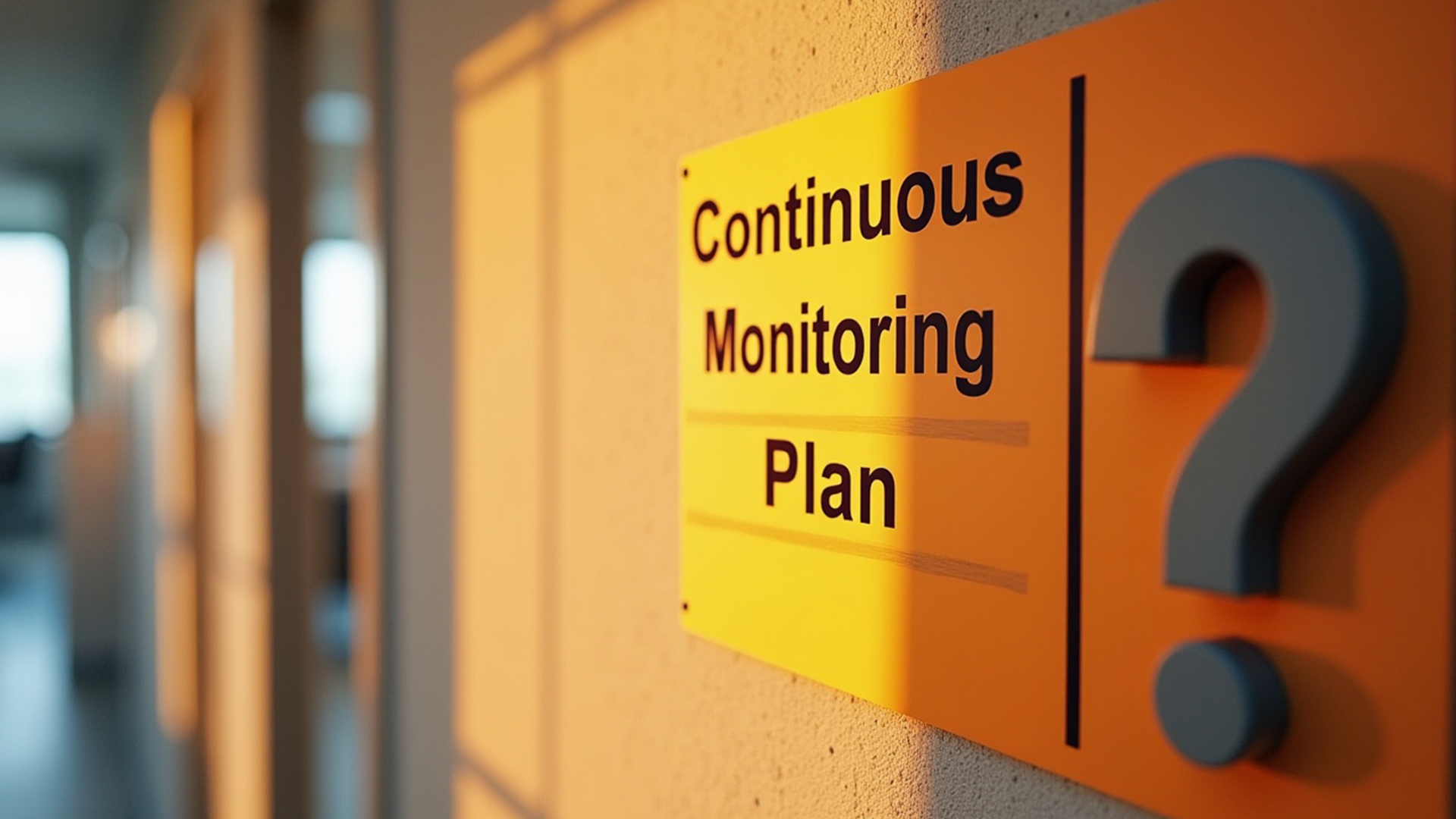
Thank you
Our team of industry domain experts combined with our guaranteed SLAs, our world class technology .


Get Immediate Help
When it comes to cloud security, compliance isn’t just a one-time achievement—it’s an ongoing commitment. For cloud service providers (CSPs) looking to achieve FedRAMP compliance, implementing a Continuous Monitoring Plan is a fundamental requirement. But why does it matter so much?
A Continuous Monitoring Plan ensures that security controls remain effective, vulnerabilities are detected early, and compliance with FedRAMP security standards is maintained at all times. Without it, organisations risk compliance violations, security breaches, and data loss—all of which can severely impact business operations.
In this blog, we’ll break down why continuous monitoring is critical, how it aligns with FedRAMP compliance requirements, and the key benefits of integrating real-time security monitoring into your cloud security framework.

A Continuous Monitoring Plan (ConMon) is a structured approach to tracking, evaluating, and mitigating security risks on an ongoing basis. It ensures that all FedRAMP-authorised cloud services adhere to strict cybersecurity regulations and meet the necessary compliance audits throughout their lifecycle.
The main goals of a Continuous Monitoring Plan include:
Ensuring ongoing compliance with FedRAMP security requirements
Identifying new security risks and vulnerabilities in real time
Providing visibility into security posture and threat landscape
Maintaining data integrity and protection in cloud computing environments
Preventing security drift that can compromise compliance efforts
For any CSP handling federal government data, implementing a Continuous Monitoring Plan is not just recommended—it’s mandatory under FedRAMP regulations.

Many organisations assume that once they receive FedRAMP authorisation, they are permanently compliant. However, that’s not the case. Compliance is an ongoing process, requiring organisations to continuously monitor their security controls, risk management frameworks, and cloud infrastructure.
Here’s why continuous monitoring matters for FedRAMP compliance:
1. Compliance Audits Are Continuous, Not One-Time
FedRAMP enforces monthly, quarterly, and annual audits to ensure cloud service providers maintain security best practices. Without a proper Continuous Monitoring Plan, CSPs may fail these audits, resulting in loss of FedRAMP authorisation and business credibility.
2. Real-Time Threat Detection and Incident Response
Cyber threats evolve rapidly. A static security framework is ineffective in today’s dynamic threat landscape. Continuous monitoring allows organisations to:
Detect anomalous activities and potential breaches in real time
Respond quickly to zero-day vulnerabilities
Ensure compliance with cloud security best practices
3. Helps Identify and Mitigate Security Gaps
Without continuous monitoring, security gaps may go unnoticed, leading to:
Unpatched vulnerabilities that hackers can exploit
Misconfigured security settings that expose sensitive data
Non-compliant security controls that lead to audit failures
A robust Continuous Monitoring Plan ensures that every security control is evaluated, updated, and optimised to meet FedRAMP requirements.
4. Supports Risk Management and Compliance
Continuous monitoring integrates with an organisation’s Risk Management Framework (RMF) to provide a proactive approach to:
Identifying and assessing security risks
Reducing cyberattack exposure
Maintaining compliance with regulatory frameworks
By leveraging risk management compliance strategies, organisations can strengthen their security posture while meeting FedRAMP security controls.

To stay compliant and secure, CSPs must develop a Continuous Monitoring Plan that aligns with FedRAMP security frameworks. Below are the key components:
1. Automated Security Controls
Implementing automated monitoring tools to track system vulnerabilities, unauthorised access attempts, and compliance deviations in real-time.
2. Continuous Risk Assessments
Conducting regular risk assessments to identify potential threats and evaluate the effectiveness of existing security controls.
3. Security Incident Response Planning
Developing an Incident Response Plan (IRP) that outlines:
Detection and reporting of security incidents
Mitigation strategies for active threats
Post-incident forensic investigations
4. Real-Time Threat Intelligence and Logging
Utilising Security Information and Event Management (SIEM) systems to collect and analyse security logs for potential cyber threats.
5. Monthly and Annual Reporting
Generating continuous compliance reports to ensure adherence to FedRAMP security standards. These reports help organisations track:
Security patches and updates
Vulnerability scan results
Penetration testing reports
Configuration management changes
6. Third-Party Security Assessments (3PAO Audits)
Engaging with FedRAMP-accredited Third-Party Assessment Organizations (3PAOs) to conduct regular security audits and validate compliance status.

Aside from regulatory compliance, a strong Continuous Monitoring Plan offers numerous benefits, including:
Stronger Cyber Resilience: Proactively detect and mitigate threats before they escalate into data breaches.
Reduced Compliance Risks: Avoid hefty fines and penalties associated with FedRAMP compliance violations.
Enhanced Operational Efficiency: Automate security controls to reduce human errors and manual intervention.
Improved Data Security in Cloud Computing: Secure sensitive data from unauthorised access, data leaks, and insider threats.
Business Continuity Assurance: Ensure that security incidents do not disrupt business operations.
Meeting FedRAMP compliance requirements isn’t easy, but Microminder Cybersecurity provides the right security solutions to streamline the Continuous Monitoring Plan for your organisation.
Managed Detection and Response (MDR) – Real-time threat monitoring and incident response to keep your cloud services secure and compliant.
Vulnerability Management Services – Automated scanning and patching to eliminate security risks before they become threats.
Compliance Management Solutions – Continuous compliance tracking to meet FedRAMP security standards and government cloud regulations.
Security Architecture Review Services – Assess your security posture to ensure it aligns with FedRAMP security controls.
Penetration Testing and Risk Assessments – Conduct regular risk assessments to validate security effectiveness.
With Microminder CS, your organisation can build a robust Continuous Monitoring Plan that not only meets FedRAMP requirements but also enhances overall cybersecurity resilience.
A Continuous Monitoring Plan isn’t just about checking compliance boxes—it’s about ensuring continuous cloud security, risk management, and regulatory compliance. Without it, organisations risk security breaches, audit failures, and compliance penalties.
By implementing a proactive security monitoring strategy, cloud service providers can maintain FedRAMP authorisation, protect sensitive data, and build a resilient security framework.
If your organisation is looking to enhance its FedRAMP compliance strategy, Microminder CS has the expertise and solutions to help you succeed. Get in touch today to build a stronger, more compliant security posture!
Don’t Let Cyber Attacks Ruin Your Business
Call
UK: +44 (0)20 3336 7200
KSA: +966 1351 81844
UAE: +971 454 01252
Contents
To keep up with innovation in IT & OT security, subscribe to our newsletter
Recent Posts
Penetration Testing | 10/11/2025
Cloud Security | 07/11/2025
Cybersecurity | 06/11/2025
What is a Continuous Monitoring Plan in FedRAMP?
A Continuous Monitoring Plan (ConMon) is a structured approach to maintaining and evaluating an organisation’s security posture by tracking, assessing, and mitigating security risks on an ongoing basis. It ensures that cloud service providers (CSPs) remain compliant with FedRAMP requirements beyond the initial authorisation stage.Why is continuous monitoring required for FedRAMP compliance?
FedRAMP requires continuous monitoring to ensure that security controls remain effective over time. This prevents security drift, helps identify emerging vulnerabilities, and ensures ongoing compliance with federal cloud security regulations.What are the key components of a FedRAMP Continuous Monitoring Plan?
A robust FedRAMP Continuous Monitoring Plan typically includes: Automated security monitoring tools Regular vulnerability scanning and patch management Risk assessments and compliance audits Incident response and security event logging Monthly and annual security compliance reporting Third-Party Assessment Organization (3PAO) auditsHow often must CSPs conduct FedRAMP continuous monitoring activities?
FedRAMP requires CSPs to conduct: Monthly vulnerability scans and compliance reports Quarterly security control assessments Annual penetration testing and full security reviewsWhat happens if a CSP fails to meet FedRAMP continuous monitoring requirements?
Failure to comply with FedRAMP continuous monitoring requirements can lead to: Loss of FedRAMP authorisation Increased security risks and potential data breaches Regulatory penalties or termination of federal contracts